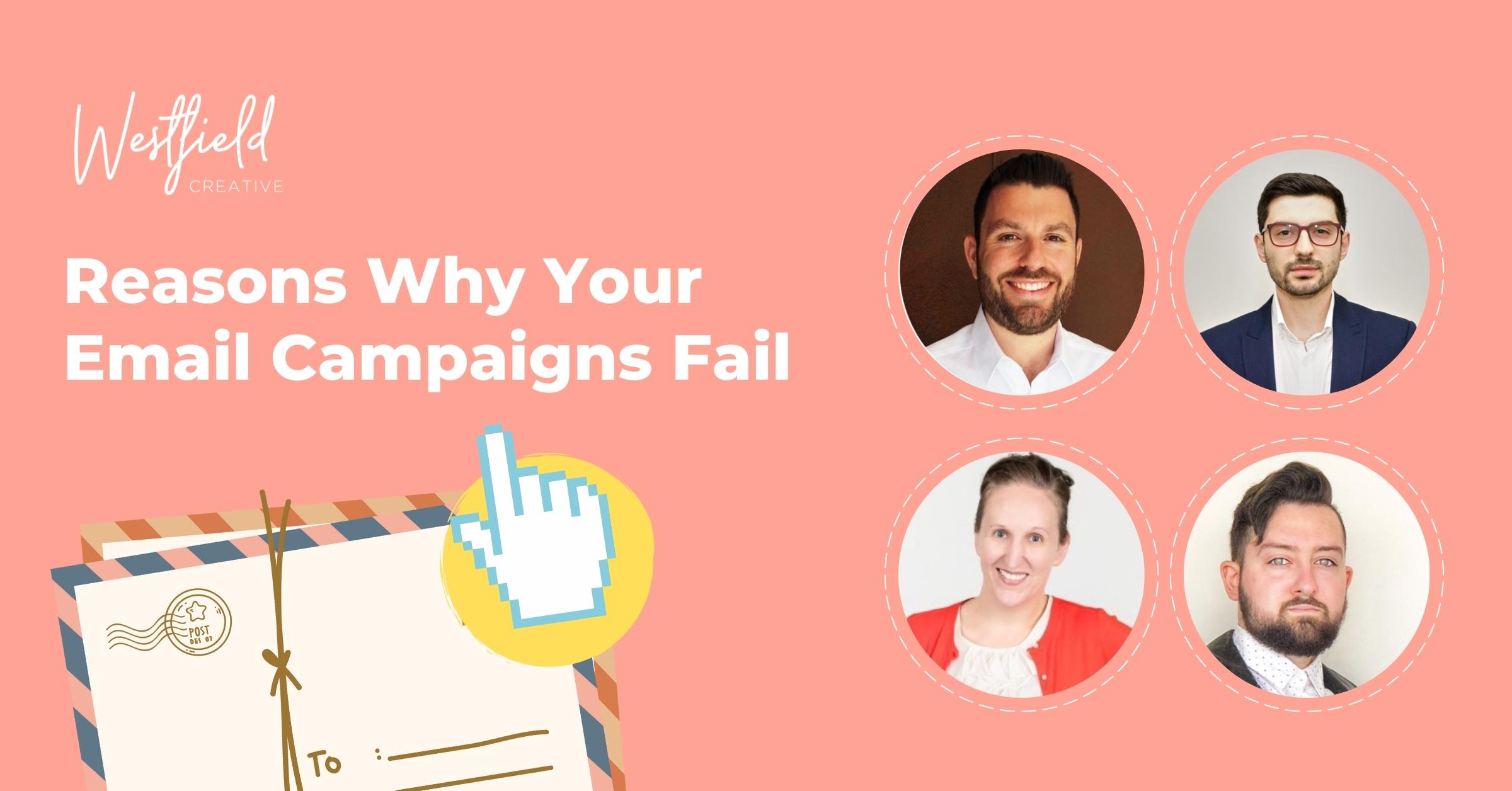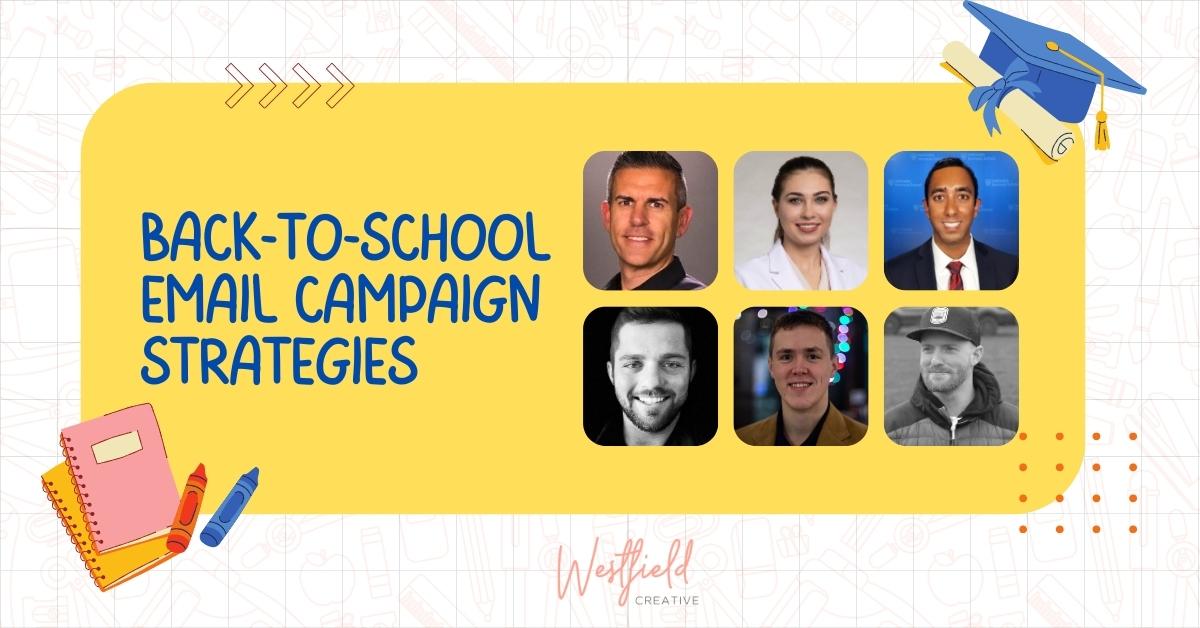What causes email marketing campaigns to fail?
To help you best identify the causes for email marketing campaign failures, we asked marketing experts and business leaders this question for their best insights. From focusing on open rates instead of click rates to using outdated subscriber lists, there are several reasons for email campaign failures that you may learn from to best address any problems with your email marketing strategies.
Here are 11 reasons why an email marketing campaign may fail:
- Focusing on Open Rates Instead of Click Rates
- Ineffective Subject Lines
- Not Putting Enough Thought into Your Copy
- Not Doing A/B Testing to Identify the Best Strategies
- Incorrect Email-Targeting Strategy
- Sending Emails Without Permissions
- Emails Being of No Clear Value to Subscribers
- Emails Rely too Heavily on Imagery
- Your Emails Are Not Welcoming Enough
- Inability to Personalize Emails in a Cookieless World
- Using an Outdated Subscriber List
Focusing on Open Rates Instead of Click Rates
Sending an email that does not promote an actionable response does little good to provide something other than awareness, and this is why marketers should instead focus on optimizing emails for clicks. Open rates are growing more and more unreliable, especially in the wake of iOS 15 where all emails default to an open, often giving a business a false read on the effectiveness of their email campaigns.
The goal should not be to increase open rates, but rather to encourage actual engagement. Therefore, your attention should be on sending the right content to the right audiences at the right time, making certain there is a prominent call to action, as well as visually engaging and interactive elements, and punchy headlines that creates a sense of urgency. By not incorporating click-boosting elements into your emails, you may get subscribers to open them, but the likely result will be a quick deletion or missed sales conversion.
Greg Gillman, MuteSix
Ineffective Subject Lines
The biggest reason email marketing strategies fail is because the offer is never read. This means that you must write short, enticing subject lines that urge the recipient to actually click to view the email’s contents. Think of your subject line as a sneak peek to what’s inside, so be sure to include any sales, discounts or important company information – as space allows.
Shaun Price, MitoQ
Not Putting Enough Thought into Your Copy
Copywriting isn’t the same as writing long-form content. The latter aims to inform while the former aims to sell. And if your advertising copy is boring, sub-par, and simply not eye-catching enough, even the best content will go missed by your customers. To really nail this element of your email marketing campaign, study some of the most effective campaigns to get better at creating impactful copy that will reel in your customers.
Harry Morton, Lower Street
Not Doing A/B Testing to Identify the Best Strategies
You need to do some A/B testing to better understand what email marketing strategies are more useful. Every business is different and has different email audiences, and this is why A/B testing is such an important method for identifying the best email marketing strategies for your particular business. Otherwise, you will feel lost in terms of how to increase your email engagement.
Nick Shackelford, Structured Agency
Incorrect Email-Targeting Strategy
It is incorrectly targeted. People are savvy about their email use and are already flooded with content and even spam mail, and they will ignore or delete emails that aren’t immediately relevant to their interests. It is essential to target your emails and the specifics of the campaign to people who have relevant interest in your brand. By being more specific, you can cut through the noise and get noticed by consumers who are willing to engage with your brand. Targeting the most relevant leads is key.
Brett Estep, Insured Nomads
Sending Emails Without Permissions
You have probably already been the subject of an unauthorized email marketing campaign. Similarly, you can certainly understand why a consumer cleans out their inbox and starts clicking the “unsubscribe” buttons on emails. When customers feel like they’ve been tricked into receiving tons of emails from marketers, they typically feel like their privacy has been invaded. Most of the time, they will delete your emails, unsubscribe from your list, and in the worst-case scenario report you as spam. Avoid having your messages blocked and automatically redirected to the spam bin by obtaining permission from your target audience instead.
Ilija Sekulov, Mailbutler
Emails Being of No Clear Value to Subscribers
Your emails must convince a busy consumer or professional to provide you permission to send them periodical messages. A small “sign up for our newsletter” button is not enough in today’s digital age. You need to provide clear value to subscribers via compelling content, insightful information, special deals, or other tactics to command their attention and inspire action. If you can’t accomplish this, then your email marketing campaign will inevitably fail.
Datha Santomieri, Steadily
Emails Rely too Heavily on Imagery
We all know how fickle email service providers can be when it comes to serving images correctly, especially in a newsletter format where there may be multiple. If you’re already struggling with deliverability issues or you’re seeing a decline in open rates, the last thing you should do is add more images. Even campaigns from the outset can fail because they rely too heavily on images, and the end result is a spammy-looking email template that doesn’t resonate with audiences. Stick to plain text where possible, and use images sparingly.
James Taylor, Digital Tool Report
Your Emails Are Not Welcoming Enough
Don’t forget the welcome email! Would you decide to skip the “Hi, how are you doing? I’ve missed you,” part of the phone call with an old friend because you were already friends with them? No! The same goes for marketing email campaigns.
Just because your email campaign is going out to your subscribers does not mean you can skip the welcome email – the welcome email is actually the most important part and has the highest open rate. The welcome email is your way to connect with your subscribers, deepen your relationship, let them know how special they are to you, and tell them what exciting things your campaign has in store for them. And because subscribers like knowing how special they are to you, welcome emails have the highest open – so take advantage of this guaranteed visibility. If you’re lazy and decide to skip the welcome email, you’re missing out on a major opportunity to connect with your audience and your campaign may fail.
Karim Hachem, Sunshine79
Inability to Personalize Emails in a Cookieless World
Optimizing the user experience, delivering personalized messages, and maximizing consent rates — all while respecting users’ privacy is crucial to any email marketing campaign’s success. In a future without third-party cookies, successful email marketers will be those that prioritize gathering first-party data; user data from their own websites, app, social channels, etc. Then they’ll need to use it responsibly by emphasizing consent-based approaches.
Jon Torres, SEO Marketing Guy
Using an Outdated Subscriber List
One reason an email marketing campaign might fail is outdated data. You can have the most attractive deal ever, but still fall short because of inactive subscribers. Always maintain the most up to date information on your email subscriber list and remove unengaged users regularly. Another good tip for this is to run email verification on subscribers that have not been emailed in thirty-plus days.
Kevin Callahan, Flatline Van Co.


